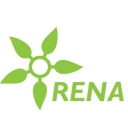Regional training on the process of designation of potential Natura 2000 sites
Date: 04-05.11.2014
Place: Podgorica, Montenegro
Organizer: ECRAN Secretariat with EC TAIEX Unit
The key EU instrument of nature protection across the EU MS is the Natura 2000 network – the world´s biggest
network of areas protected and conserved for particular habitat types and species. It is composed of sites dedicated
to conservation of birds (SPA) and selected fauna, flora and habitat types (SCIs) established pursuant to the EU
Nature Directives – Bird Directive (147/2009/EU) and Habitats Directive (92/43/EEC).
Natura 2000 is now reality in EU 28 and its extension is envisaged in all potential EU members. Despite the vast
amount of practical experience with Natura 2000 establishment in particular EU MS, information flowing to ECRAN
beneficiary countries since the end of 1990s has been scattered and often inconsistent, which has resulted in a lot of
myths and incorrect impressions. In addition, there has been a lot of confusion with establishment of apparently
similar networks like Emerald, IPA, PBA, but also outcomes of activities implemented on the basis of international
conventions and treaties principally serving different purposes than just protection of biodiversity. No wonder that
there has been no clear picture on what Natura 2000 really is, what are the logical steps of its building up, what
capacities and resources it requires, and so on. Also, unrealistic expectations as to the minimum length of the
preparatory process have been observed in some ECRAN countries, many of which belong to European biodiversity
hot-spots – the fact putting additional burden on those dealing with Natura 2000 preparation (as more biodiversity
means the need for more data, more capacities and more resources).
Therefore, ECRAN countries need to be provided with a clear idea on data, expertise, time and funding requirements
for achieving what is expected under “Natura 2000 network”. At the same time they need to be fully and truthfully
informed about the consequences of establishment of Natura 2000 network. Therefore, this training should address
all these issues in a way pointing out specificities of the ECRAN region.
Objectives of the workshop:
Wider Objective: to assist ECRAN beneficiary countries in meeting their requirements for full
implementation of the site protection pillars of EU “Nature” Directives (Bird Directive (147/2009/EU)
and Habitats Directive (92/43/EEC)).
Specific Objectives: to provide staff of public administration and expert bodies of ECRAN beneficiary
countries responsible for preparation of (future) Natura 2000 network with exhaustive information
about the particular steps of its building, their logical order, data, expertise, time and funding
requirements, to make them familiar with the requirements of the European Commission, and to
provide them with practical examples from current EU MS. All this information should serve as a
background for preparing roadmaps for each particular countries as well as for formulating their
requirements for funding, personnel and time needed for accomplishing their tasks.
Expected Results of the workshop:
Improved understanding of the Natura 2000 network, its complexity, steps preceding its preparation
and particular steps of its creation.
Familiarity with the requirements of European Commission – DG Environment and its expert body
ETC/BD as well as with settled practice of Ornis and Habitats Committees.
Familiarity with type and quality of data needed.
Familiarity with interrelationship between Natura 2000, Emerald network and some other activities
developed by international treaties and NGOs.
Getting practical and realistic information on capacity, time and resources needed for Natura 2000
preparation.
Opportunity to confront own ideas with the experience of practitioners from EU MS and EEA
Expected Results of the workshop
The expected results are:
- Improved understanding of the objectives of Natura 2000 network and the role of AA as one of its protective tools in its maintenance;
- Familiarization with particular requirements of AA in light of CJEU rulings;
- Understanding the differences from and similarities with EIA;
- Familiarization with the pilot site and pilot project;
- Learning about the 1st stage of AA (screening) and undertaking the screening for the pilot site;

